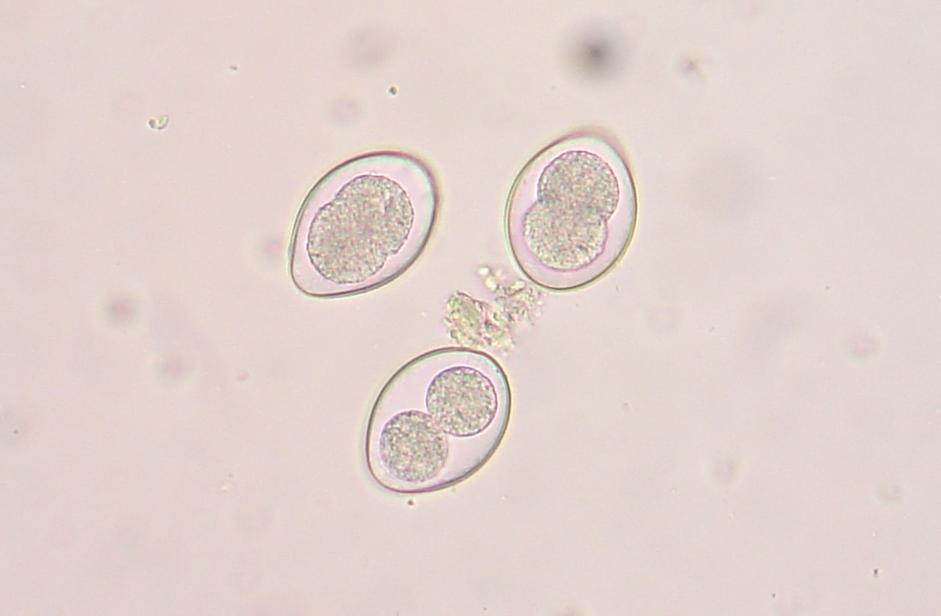
What are Eimeria
Oocysts
Eimeria is a type of protozoan parasites belonging to the coccidia family. Oocysts are the spores formed by Eimeria that end up in the environment. Once ingested by the animal, they follow a definite life cycle and typically infest the cells lining the intestinal mucosa of animals, especially poultry, causing infections known as coccidiosis, which can have a major economic impact on poultry farms. In order to efficiently manage coccidial risk inside livestock, it is important to understand the life cycle of these Eimeria, which involves several distinct stages, including oocyst stage.
The oocysts in the environment and the
Sporulation process
Oocysts, which are the highly resistant form of the parasite, are shed in the feces of infected animals and are therefore spread in the farm environment through the use of oocyst-contaminated litter, feed, water, feeders, drinkers or equipment. Initially, the oocysts are unsporulated and are highly resistant to harsh environmental conditions and can even survive, for extended periods, in the presence of disinfectants and other environmental stressors. To become infectious for the animal, oocysts have to become sporulated, and this process usually takes 48 hours under favorable environmental factors required for sporulation, such as oxygen, warmth and moisture. Sporulated oocysts contain two sporocysts, each containing two sporozoites, resulting in a total of four sporozoites per sporulated oocyst, which are harmful to animals when ingested.
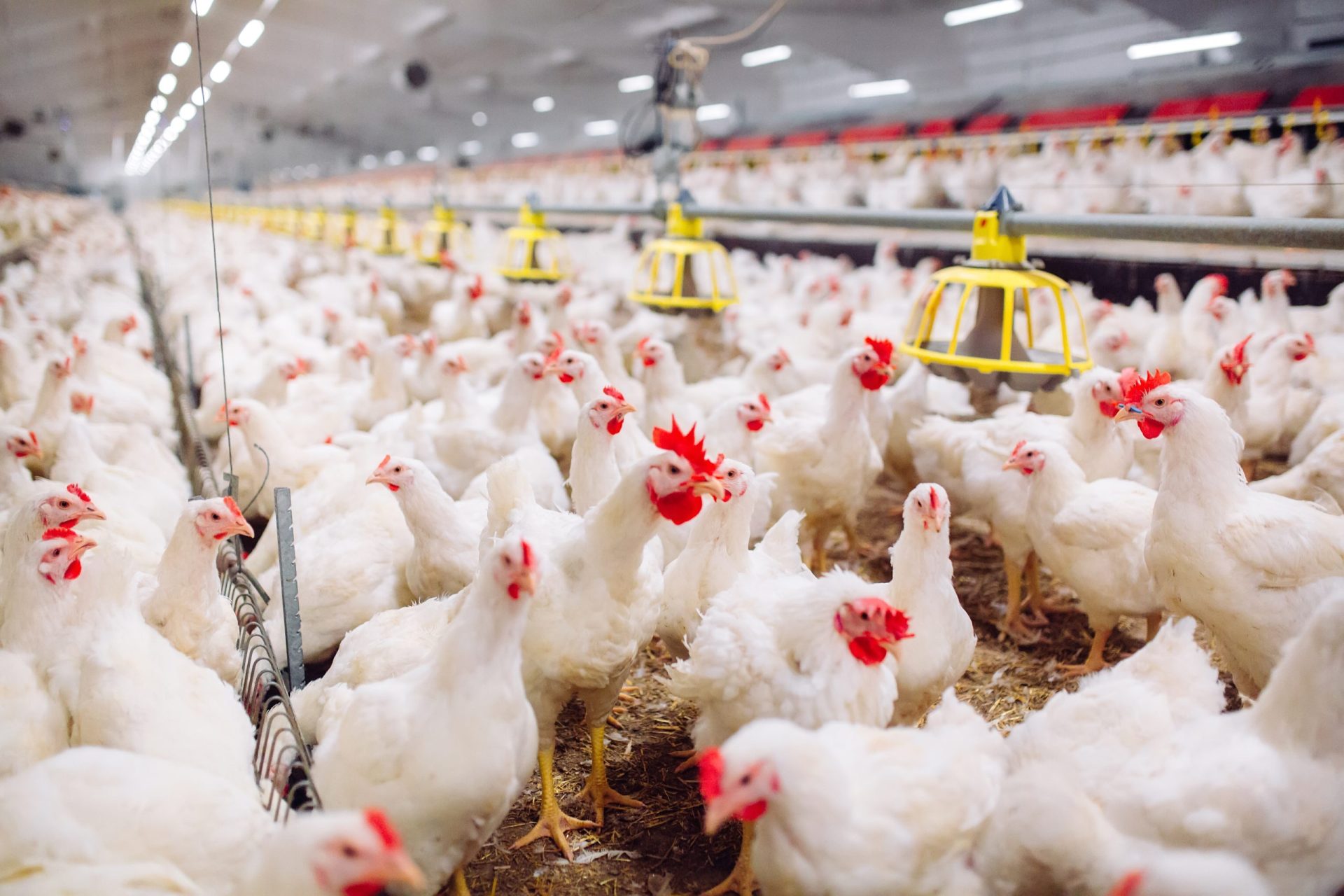
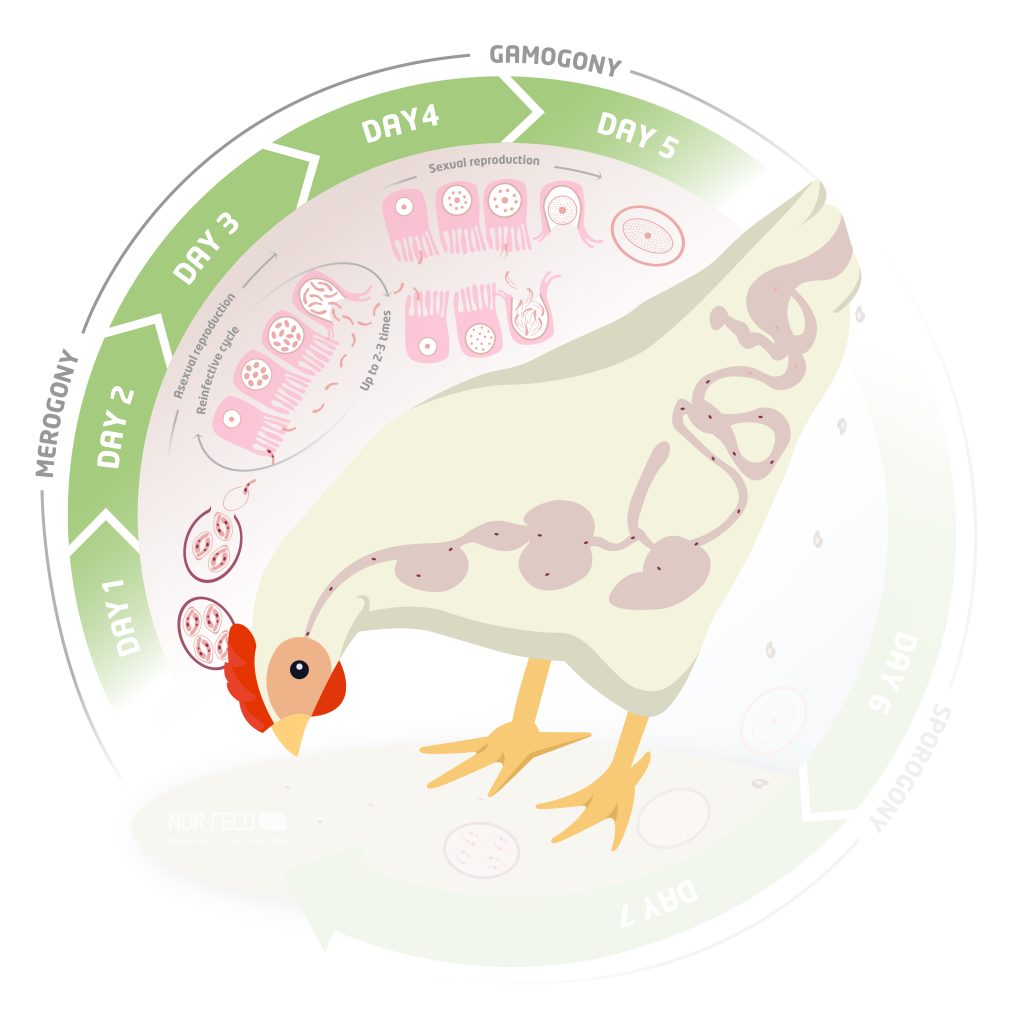
The ingestion of sporulated oocyst by the animal and the
Reproduction cycle
Animals become infected by coccidiosis when they ingest sporulated oocysts, through contaminated water or feed or by pecking the contaminated litter. These sporulated oocysts release sporocysts in the host’s gastrointestinal tract, at the stomach’s level. They continue their way to the intestine where they liberate sporozoites. These sporozoites then invade the epithelial cells, which line the intestinal mucosa, to perform their asexual reproduction. They then form merozoites who are released in the lumen and re-invade other cells. Merozoites release in the lumen causes the host cells death and thus gut damages. Follows a phase of sexual reproduction, leading to the formation of an immature oocyst released into the lumen. This intracellular reproduction cycle (asexual and sexual) of sporulated oocysts takes 5 days.
The release of newly formed oocysts in the
Farm environment
The new oocysts, released in the intestinal lumen, are then rejected by the animals’ organism through the feces. Therefore, the life cycle of Eimeria repeats as new oocysts are shed into the environment, contaminating surroundings and other animals in the livestock. In average, from one ingested sporulated oocyst, up to 1 million oocysts can be formed inside the animal’s intestinal tract in 5 days, which means much higher risk of infection inside the farm once these are excreted in the litter through feces, and sporulated. For managing coccidial risk, environmental management measures have to be put in place, combined with strict internal diagnostics and treatments such as saponin-based plant extracts.
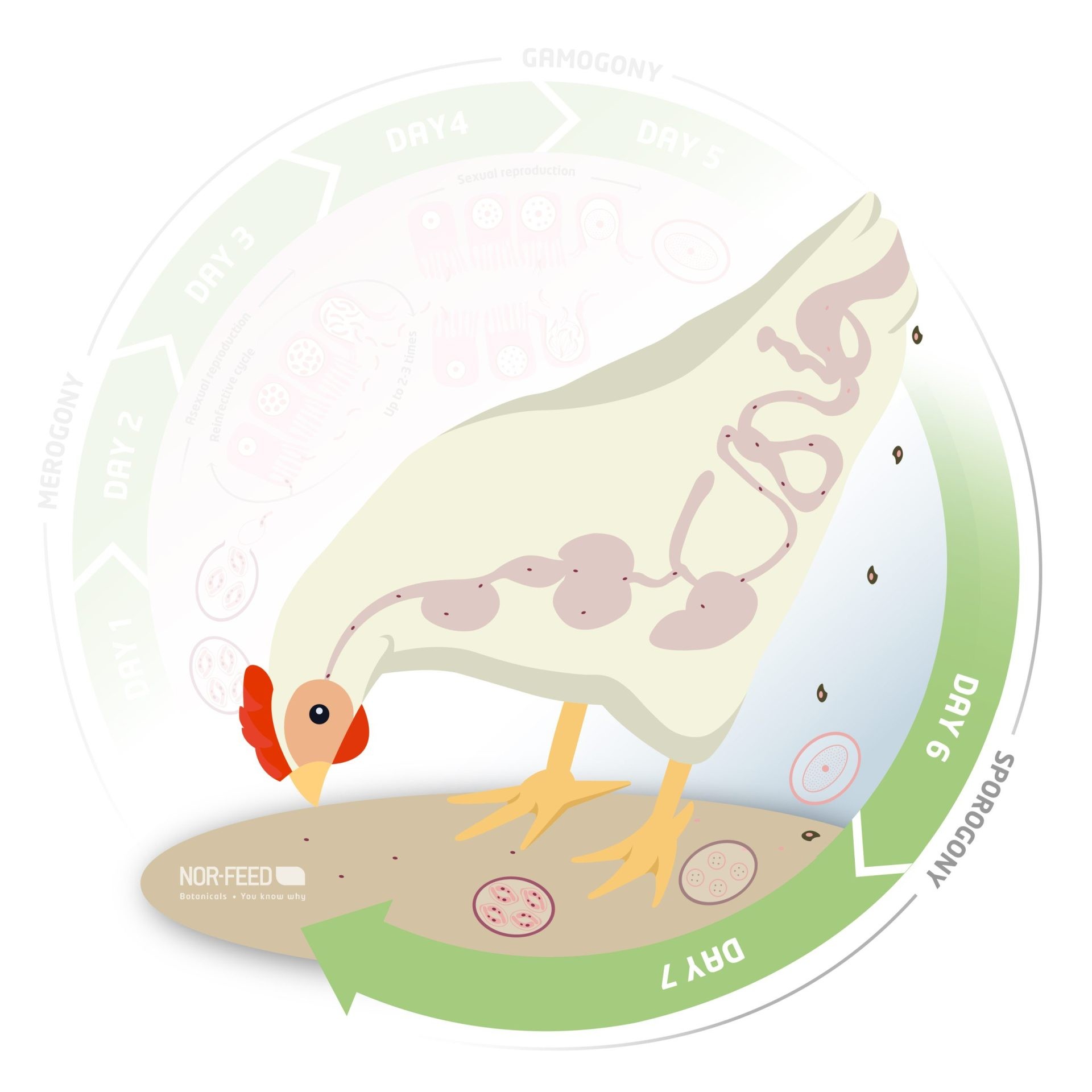
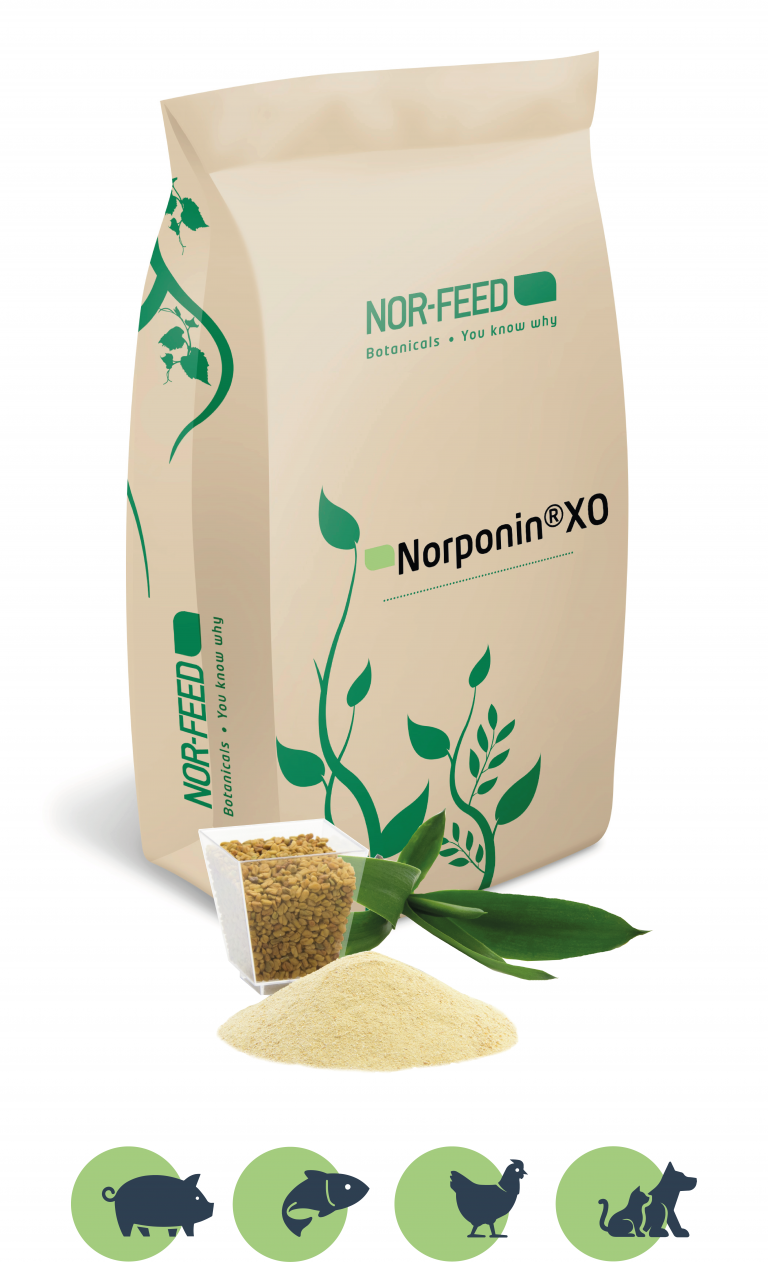
Our 100% natural solution to contribute to coccidial risk management
Norponin® XO
Norponin® XO is a natural solution based on plants rich in saponins that contributes to the management of coccidial risk in multiple species.

